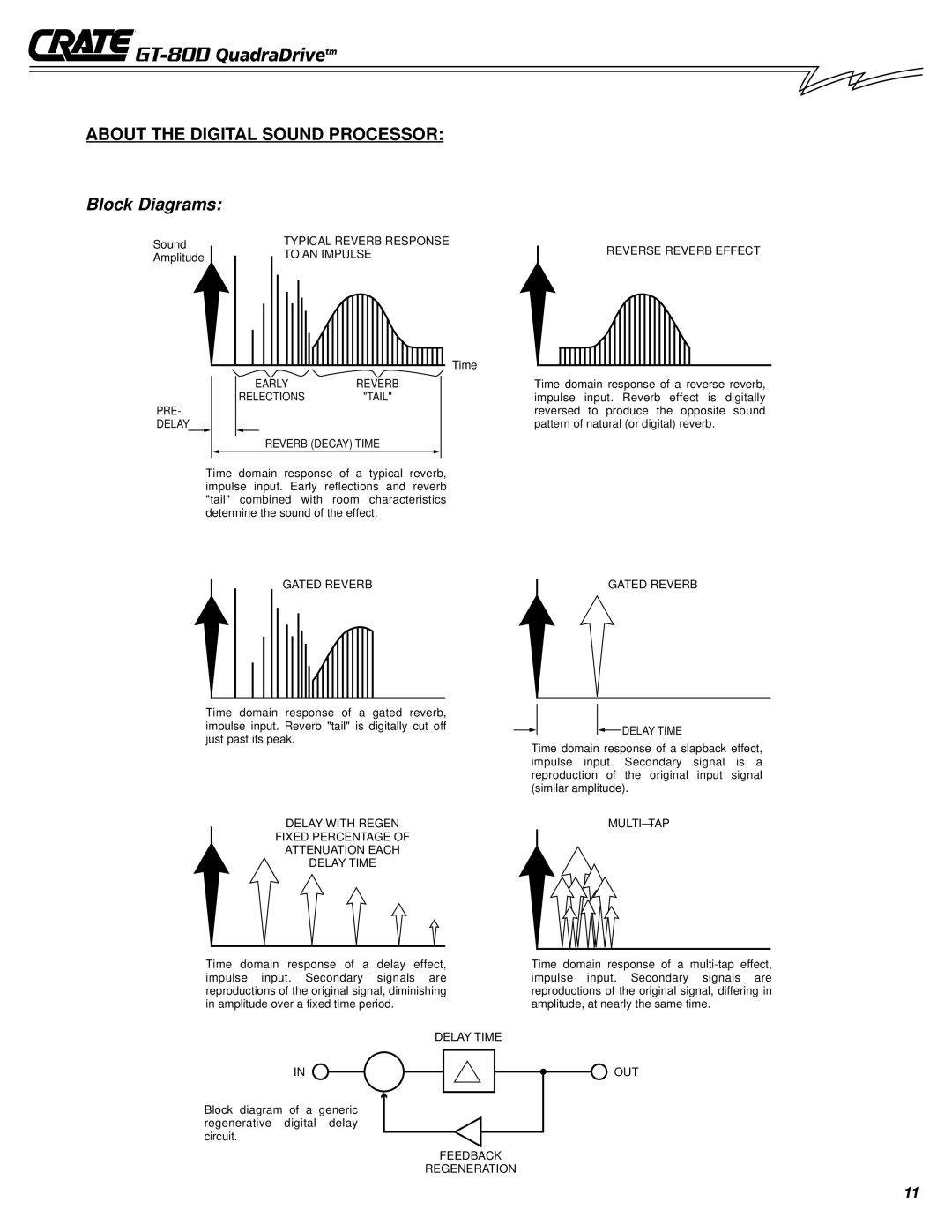
 GT-80D
GT-80D
ABOUT THE DIGITAL SOUND PROCESSOR:
Block Diagrams:
Sound | TYPICAL REVERB RESPONSE | |
TO AN IMPULSE | ||
Amplitude | ||
|
Time
EARLYREVERB
RELECTIONS"TAIL"
PRE-
DELAY
REVERB (DECAY) TIME
Time domain response of a typical reverb, impulse input. Early reflections and reverb "tail" combined with room characteristics determine the sound of the effect.
REVERSE REVERB EFFECT
Time domain response of a reverse reverb, impulse input. Reverb effect is digitally reversed to produce the opposite sound pattern of natural (or digital) reverb.
GATED REVERB
Time domain response of a gated reverb, impulse input. Reverb "tail" is digitally cut off just past its peak.
GATED REVERB
 DELAY TIME
DELAY TIME
Time domain response of a slapback effect, impulse input. Secondary signal is a reproduction of the original input signal (similar amplitude).
DELAY WITH REGEN | ||
FIXED PERCENTAGE OF |
| |
ATTENUATION EACH |
| |
DELAY TIME |
| |
|
|
|
|
|
|
Time domain response of a delay effect, impulse input. Secondary signals are reproductions of the original signal, diminishing in amplitude over a fixed time period.
Time domain response of a
DELAY TIME
IN∑
Block diagram of a generic regenerative digital delay circuit.
FEEDBACK
REGENERATION
OUT
11
